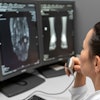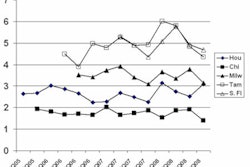Resident physicians' duty hours should be more strictly regulated to avoid resident fatigue and to ensure patient safety, according to a new report published by the U.S. Institute of Medicine (IOM).
The IOM produced the report at the request of the U.S. House of Representatives Committee on Energy and Commerce, and it was published in this month's Journal of the American College of Radiology (January 2010, Vol. 7:1, pp. 56-60). The IOM recommendations focus more on reducing fatigue-related errors by ensuring that residents get regular opportunities for sleep each day, rather than by reducing the maximum weekly work hours.
Current Accreditation Council for Graduate Medical Education (ACGME) duty hour requirements state that residents must not work more than 80 hours per week averaged over four weeks, and they must be provided one day in seven free from all educational and clinical responsibilities, averaged over four weeks.
The IOM doesn't suggest changing this but does recommend that the maximum shift length allowed remain 30 hours (with admitting patients or new case work restricted to 16 hours), only if there is a five-hour protected sleep period between 10 p.m. and 8 a.m. If there is no protected sleep period, the maximum shift becomes 16 hours.
The minimum time off between scheduled shifts is also increased to 12 hours after a night shift and 14 hours after any 30-hour shift, according to lead author Dr. Martha Mainiero of the Warren Alpert Medical School of Brown University, Rhode Island Hospital, in Providence, and colleagues.
Also, the frequency of night-shift work would be regulated for the first time if the IOM's recommendations are adopted, with a maximum of four nights followed by 48 hours off after three or four nights of consecutive duty, the group wrote.
These further restrictions are necessary, according to the authors.
"The radiology community supports the current ACGME requirements but recognizes that there has been inadequate study of the outcomes of the current duty hour regulations and that there continues to be issues with compliance with those regulations," they wrote. "Therefore, we feel these issues should be addressed with more rigorous monitoring of duty hours before implementing new duty hour requirements."
By Kate Madden Yee
AuntMinnie.com staff writer
January 5, 2010
Related Reading
Majority of radiology residents still leery of breast imaging, December 15, 2009
Radiology residents score lower using structured reports, September 14, 2009
Survey shows residents have ample job options, September 26, 2008
Survey: Radiologists 50 and older eager for work changes, November 19, 2007
Radiologists still high on recruiters' wish lists, August 14, 2007
Copyright © 2010 AuntMinnie.com




















